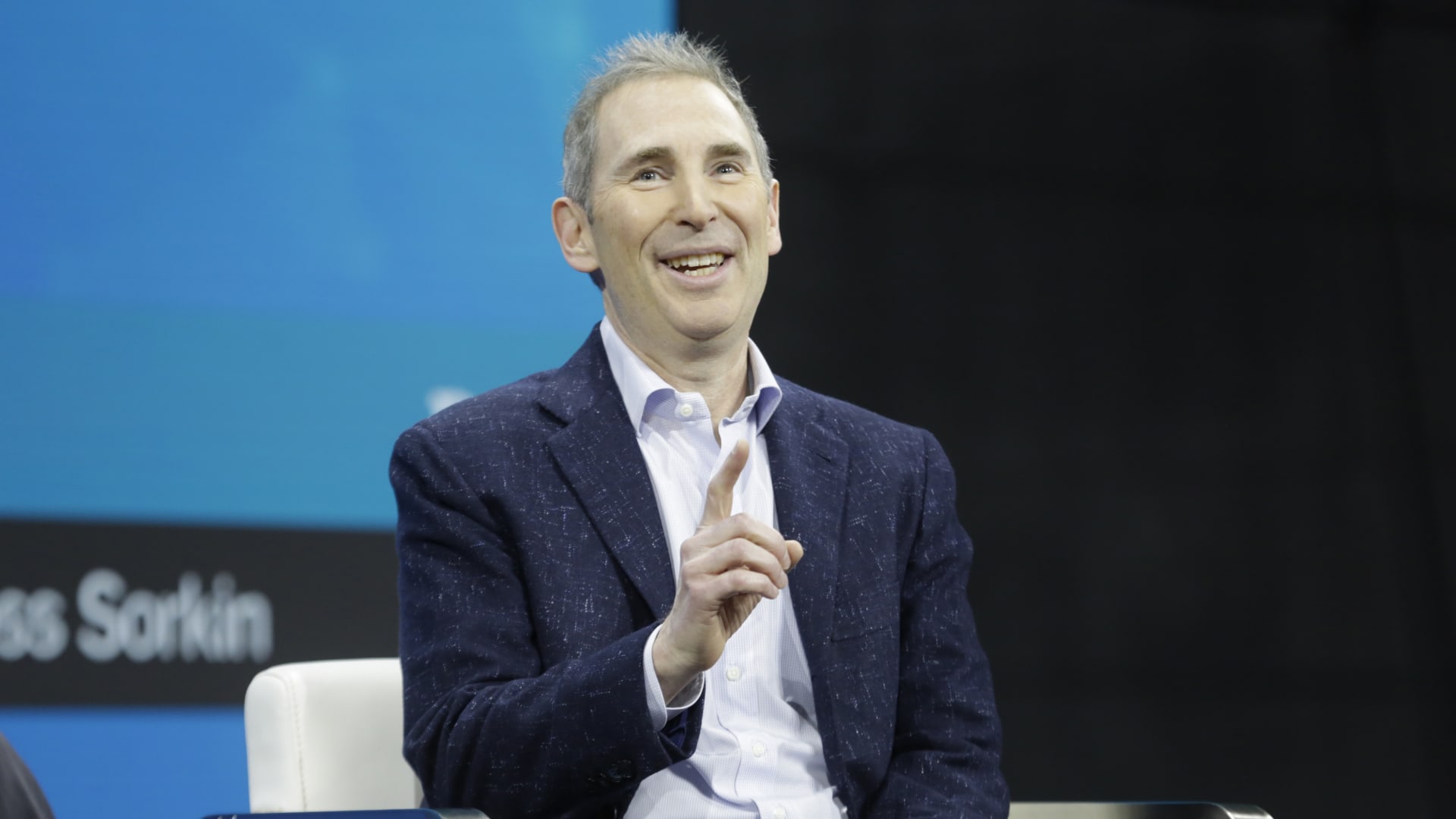Amazon founder Jeff Bezos famously shunned Wall Street’s earnings obsession, claiming the customer was always more important.
While his successor, Andy Jassy, also talks plenty about serving customers, he’s been forced by investors to get serious about profitability. And his efforts are paying off.
Amazon delighted investors on Thursday, posting earnings of 65 cents a share, blowing past estimates of 35 cents a share. The company’s stock surged almost 9% in extended trading.
The last time Amazon delivered an earnings beat that big was in February 2021, when profit for the fourth quarter of 2020 came in at $14.09 per share, almost double analyst projections. At the same time, the company surprised investors by announcing Bezos would step down as CEO.
Jassy closed out his second year at the helm in July. Under Jassy, Amazon has morphed into a leaner version of itself, as slowing sales and a challenging economy pushed the company to eschew the relentless growth of the Bezos years. Investors dialed up the pressure after watching the stock lose half its value in 2022.
Jassy pared back underperforming projects in riskier, newer verticals like healthcare and grocery, froze corporate hiring and eliminated 27,000 jobs.
In Jassy’s prepared remarks at the start of Thursday’s earnings call, cost cuts were one of his central themes. He emphasized steps the company has taken to reduce expenses in its fulfillment system, such as moving from a national network to a “series of eight separate regions serving smaller geographic areas.”
“We keep a broad selection of inventory in each region, making it faster and less expensive to get these products to customers,” he said.
Amazon said its core business of selling goods in North America earned $3.21 billion during the quarter, a reversal from the same period a year ago, when the segment lost $627 million.
The broad-based changes under Jassy have left the company less dependent on its cloud business, Amazon Web Services, for profits. AWS, which provides cloud infrastructure and a wide range of software services to business around the world, has often accounted for all, or almost all, of Amazon’s profit.
In the second quarter, Amazon was able to expand its overall margin while AWS’s profit margin declined to 24.2% from 29% a year earlier.
AWS beat revenue estimates in the quarter. But at only 12% year-over-year growth, the cloud business is seeing its slowest expansion since Amazon began breaking out its revenue in 2015.
Jassy wants investors to think about it in a different way. Last year, as economic concerns became the dominant theme in corporate America, companies were looking to reduce expenses, including finding ways to lower their cloud bills. Jassy says AWS helped them with their “optimization,” getting more productivity at lower costs.
That trend has continued, which Jassy says makes the cloud unit’s growth rate a rather impressive feat, given it’s already generating over $20 billion in sales a quarter.
“To still grow double digits on a base that size means that we’re acquiring a lot of new customers and a lot of workloads,” Jassy said, near the end of the call. “I’m very bullish of the growth of AWS over the next several years.”
Jassy and other Amazon executives have also been quick to remind investors that the generative artificial intelligence craze should be a boon for its cloud business. Traditional forms of AI and machine learning have driven a significant amount of business for AWS in recent years, Jassy said, and generative AI is expected to spur further adoption of its cloud services.
However, that means Amazon will likely need to increase its capital expenditures to fund its AI initiatives.
“One of the interesting things in AWS, and this has been true from the very earliest days, the more demand that you have, the more capital you need to spend, because you invest in data centers and hardware upfront, and then you monetize that over a long period of time,” Jassy said. “I would like to have the challenge of having to spend a lot more capital on generative AI because it will mean that customers are having success, and they’re having success on top of our services.”
WATCH: Investors are watching to see if Amazon is an AI winner
This story originally appeared on CNBC

